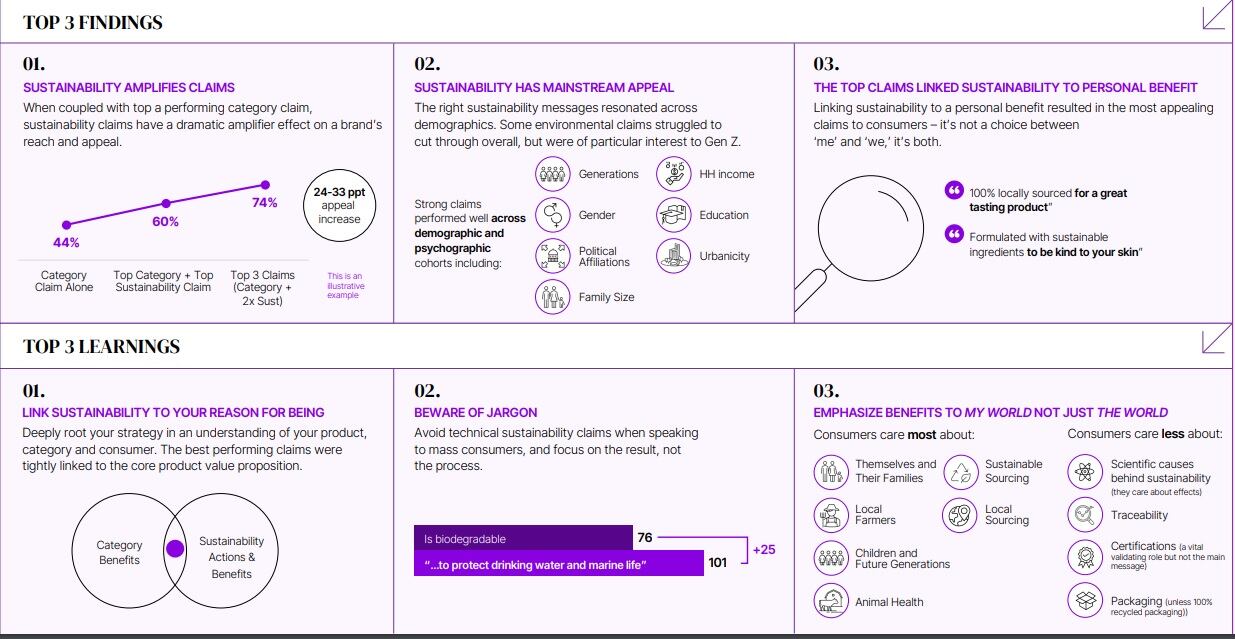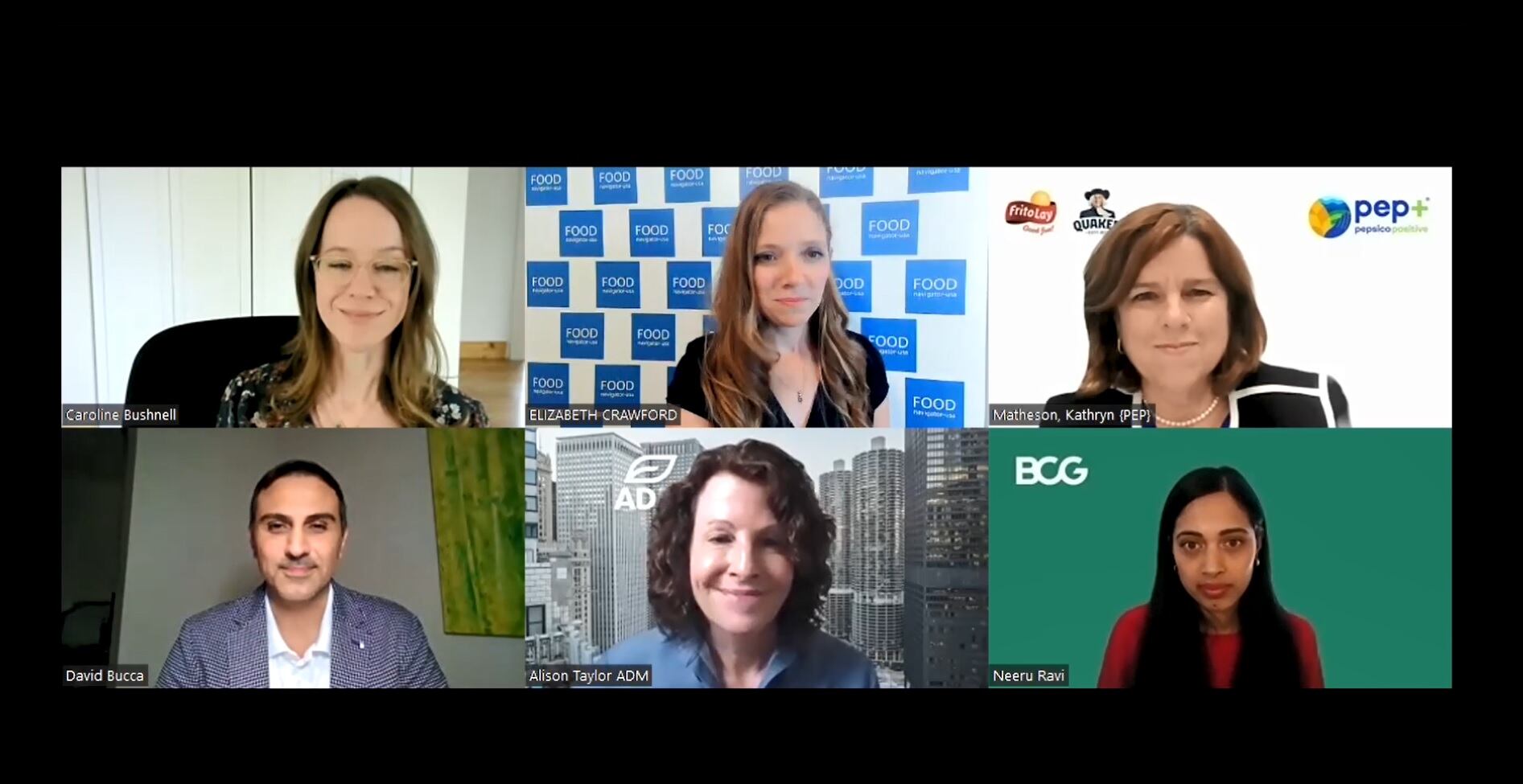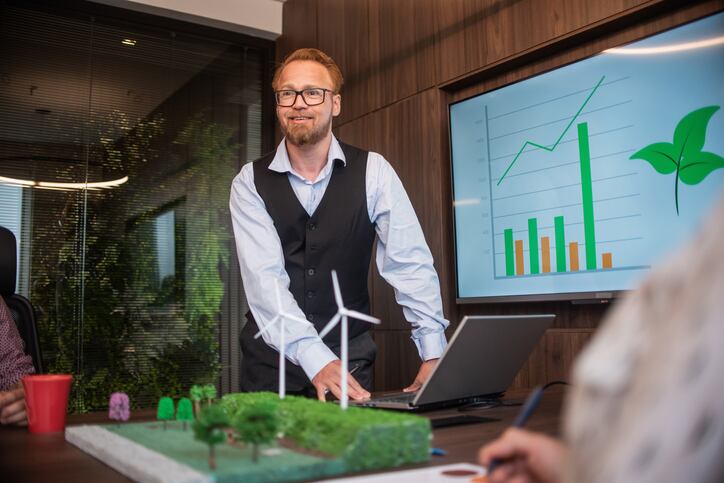“Open-sourced collaboration in this space is important. We are trying to all break ground together and deliver new solutions to the world, and that often takes partnership and pre-competitive efforts to try to work in new technologies and new space,” Kathryn Matheson, senior director, global foods, research & development at PepsiCo, said in the fourth installment of FoodNavigator-USA’s four-part video series examining sustainability and future-proofing the food system.
These efforts also must extend beyond food and beverage to include innovative work systems, packaging, technology and, at times, the unexpected application of theories or concepts beyond the food and beverage industry to the development, production and distribution of food and beverage, she added.
To maximize the positive impact while minimizing time and other resources necessary to create change, stakeholders hoping to make a more sustainable food system should concentrate their efforts on four critical components, added Neeru Ravi, principal and alternative proteins topic lead in North America for the Boston Consulting Group.
“The first is innovation – continuous innovation – and we really dug into that in last week’s session, the second is investment to fund that innovation, the third is around policy and what we can do from a government perspective to support and expedite that, and then the fourth piece is consumer adoption and what we can really drive to win that mainstream consumer,” she explained.
Driving continuous innovation for a more sustainable food system
While innovation can provide a competitive edge, when it comes to creating a more sustainable food system that will benefit everyone, Matheson argued there are times when companies need to put aside their differences for the gain of the greater good.
For example, in 2020, PepsiCo did this by working with Corteva Agriscience to sequence – and share – the full oat genome.
“We immediately made it open-sourced and made it available for everybody so that we could together improve oats and oat growing and breeding,” Matheson said, noting more than 5,000 scientists and organizations accessed the genome to reduce the need for water and inputs, improve disease resistance and other gains.
“We’re excited about the multiplier effect of what we can do when we make some of those things open source as a strategy,” she said.
PepsiCo is taking a similar approach to its work on creating more sustainable and compostable packaging, which it is advancing through its Greenhouse Learning Center, she added.
Cultivating diverse investment, government support
Funding innovation at the scale necessary to create a more sustainable food system will require funding from diverse investors who are patient, said Ravi.
“What is interesting about [the food system] is that when it comes to time horizon on these investments, food is different than software and consumer services. It is on a longer time horizon, and so we need to be creative in terms of funding mechanisms that we think about to support the large amounts of capital expenditure we need to drive innovation and scaling,” she explained.
One source for patient capital at levels large enough to drive notable change are governments, which David Bucca, CEO of Change Foods, said he turned to when his company decided to build a large scale precision fermentation manufacturing facility.
He explained that Change Foods opted to build its facility in Abud Dhabi in part because the governed offered capex support, grant fundings, skilled labor, land, leasing energy and more.
“There’s a plethora of different ways that governments and other large companies” can offer support, he said.
He also noted that if funding requests are couched within ESG goals, some banks raise their risk levels from 5% to 10% and even 15% because the investment will help them meet their own sustainability goals.
Carolyn Bushnell, VP of corporate engagement at the global non-profit The Good Food Institute, also called out the FAIIR Initiative as a potential investment resource as the collaborative investor network that raises awareness of material ESG risks and opportunities in intensive livestock production.
“The FAIIR Initiative, which is the fastest growing investor network focusing on ESG risks in the global food sector, has over $70 trillion in member assets under management and has an ongoing engagement with 25 of the top global food companies on this very topic,” she said.
Driving consumer adoption
Building out supply through innovation and investment is only part of the equation – the food and beverage industry also must drum up demand to more quickly shift the food system towards a more sustainable path.
This requires transparency and proactive education, said Bucca.
He explained that people care about where their food comes from and will take time to understand different production methods and new ingredients, including those from precision fermentation, if companies take time to explain.
Those explanations, however, should be carefully crafted to use language that is honest but won’t inadvertently trigger a negative response of cause consumers to turn away.
“Language is so critical,” he said. “I can’t tell you how many times … I see another article coming out saying ‘lab grown meat’ and that is just so unfortunate, but I think it is because it is clicky, it grabs attention, but at the same time, all food starts in a lab. But the reality is, when it is produced at mass scale, it is no longer a lab. You know, it is out of in a brewery, in its in a huge fermentation facility…. So working together as an industry is really important to align in that language.”
Looking ahead
Based on the insights from the experts gathered by FoodNavigator-USA for this four-part series on sustainability and future-proofing the food system, the path toward a more sustainable food system is no doubt long and will be difficult, but the industry is already on its way.
To learn more about where stakeholders are headed, where they are now and where they are coming from, check out the full four-part series.
The first installment looks at the current impact of the food system on the environment and where there are opportunities to benefit the climate and business.
The second installment addresses the business case for sustainability and the need to bridge the gap between what consumers say and do.
And the third installment explores the role of technology and alternative proteins in creating a more sustainable food system.



